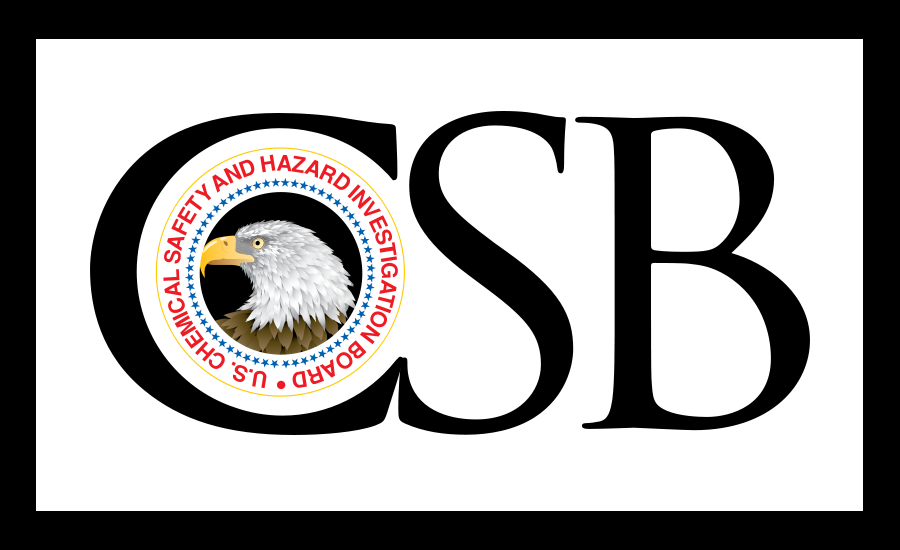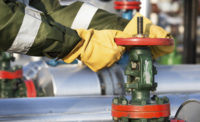Federal safety regulators, state oil and gas authorities, and the energy industry need to close regulatory gaps that contributed to the worst oil drilling accident in nearly a decade, a federal agency said in an unprecedented report.
The 2018 explosion and fire outside Quinton, Okla., killed five people, making it the deadliest accident in the drilling industry since 2010, when a BP oil rig exploded and killed 11 workers in the Gulf of Mexico. The investigation marks the first time the U.S. Chemical Safety Board, which is an advisory agency similar to the National Transportation Safety Board, has gotten involved with an onshore drilling accident.
Tougher oversight could have prevented a series of lapses leading up to the rig explosion, the safety board said, although the companies involved dispute some of the board's conclusions. Alarms that could have warned the crew about the impending blowout were turned off, and the rig's crew overlooked signs that large amounts of gas were pushing into the well.
The blowout was "completely preventable," and the safety board plans to monitor the drilling industry, Kristen Kalinowski, CSB's interim executive director, said at a press conference in Oklahoma City.
"We're concerned about future accidents," Kalinowski said. "This is a very serious incident — five people lost their lives. That's a threshold we cannot ignore."
The United States has been in a drilling boom for more than a decade, and the numbers of injuries and death among oil-field workers has remained stubbornly high. There were 948 land-based drilling rigs working in the United States as of June 7, according to industry data.
The federal government's main workplace safety agency — OSHA — has tried since the Reagan administration to write safety regulations specifically for the oil and gas industry but never succeeded.
The oil industry is also exempt from regulations that OSHA wrote for the construction industry, aimed at preventing falls and other accidents. And it's exempt from the "process safety management" that was developed in the 1990s to prevent explosions at refineries and chemical plants.
Meanwhile, state regulations in Oklahoma are generally written to prevent pollution and make sure there's no waste of oil and gas.
A 'tripping' disaster
The explosion occurred just outside Quinton, on Jan. 22, 2018, as a crew employed by drilling contractor Patterson-UTI Energy Inc. was drilling a gas well for the producer Red Mountain Energy. The crew was "tripping," or removing pipe from the well when gas began escaping to the surface and ignited.
The fire destroyed the rig and killed five men: Josh Ray, 35, of Fort Worth, Texas; Matt Smith, 29, of McAlester, Okla.; Cody Risk, 26, of Wellington, Colo.; Parker Waldridge, 60, of Crescent, Okla.; and Roger Cunningham, 55, of Seminole, Okla.
In most cases, oil and gas wells are filled with a column of heavy fluid known as drilling mud, which offsets the pressure in the well and keeps oil and gas from escaping.
The Quinton well was "underbalanced," meaning that the fluid wasn't heavy enough to hold back the underground gas. Lawyers for the workers' families have said that Red Mountain deliberately used mud that was lighter than needed to save money and to create a large flare of burning gas at the site, which was allegedly used to attract investors.
Red Mountain said the safety board's findings on the drilling mud were "inconsistent with the data we provided."
"Mud weights were kept in a range which maintained well control at all times," Red Mountain President Tony Say said in a statement. "This is the case on all Red Mountain wells. The large array of unfortunate human errors identified by the CSB were responsible for this catastrophic event."
The crew also didn't perform tests to determine if gas and oil were leaking into the well bore, the safety board said. And the crew may have deliberately disabled the alarms because of a high number of nuisance alarms.
Gas began pushing into the well 14 hours before the blowout. The drilling crew and the supervisors from Red Mountain didn't notice it, CSB said, partly because of confusion over drilling procedures.
Shortly before the blowout, the escaping gas forced more than 100 barrels of mud out of the well bore and into a tank. That normally would have triggered an alarm, according to the report.
When the blowout happened, two crew members rushed from the drilling rig floor to the control room. But they were trapped along with three others in the control room because the exits were poorly designed and were blocked by the fire, the report said.
The blowout preventer, a combination of valves and machinery designed to cut off the flow from the well, was unable to work because the flames had burned through its rubber hoses.
The workers' remains had to be identified with dental records.
OSHA reforms?
The safety board recommended that OSHA either apply the existing process safety management rules to the drilling industry, modify the rules to tailor them to the industry or write rules specifically for oil and gas drilling.
Trade groups, including the American Petroleum Institute and the International Association of Drilling Contractors, should develop more specific standards for "tripping" and for the use of alarms. They should also develop recommendations to make drilling-rig control rooms safer, including hardening them against explosions and fires and improving escape routes.
Future rigs could be designed with the control room located at a safer distance from the well bore, the report said.
Oklahoma and by extension other energy-producing states should require companies to file detailed plans showing how they'll manage risks and perform tests to prevent blowouts.
OSHA has been gathering information about modernizing its process safety management rules since 2013 and may consider some of CSB's recommendations in the updated regulations, Kimberly Darby, an agency spokeswoman, said in an email. It's not clear when the rules will be finalized, Darby said.
A spokesman for the Oklahoma Corporation Commission said the agency will review the safety board report.
The state commission found that Red Mountain had violated the state's oil spill prevention rules but declined to impose a monetary fine after the company cleaned up the site. The state investigation is still open, commission spokesman Matt Skinner said.
Patterson-UTI began evaluating its procedures after the explosion, the company said in a statement.
"While Patterson-UTI Drilling does not agree with all of the findings in the report, Patterson-UTI is nevertheless evaluating what additional policies, procedures and training could be implemented to address the key issues raised in the report," the statement said.
Source: eenews.net


